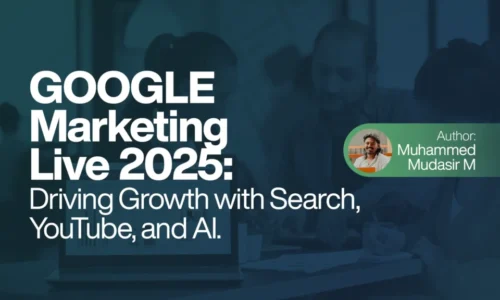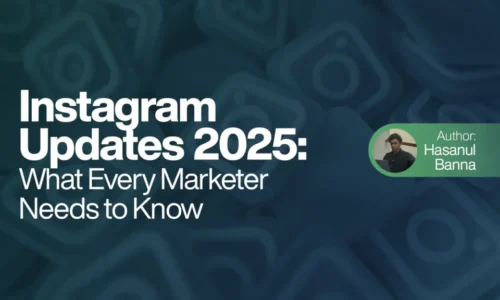Niche Community Building: How Smaller Audiences Generate Bigger Results
Social media often feels like a race for the biggest numbers. Creators and brands chase viral fame, believing that a massive follower count is the ultimate prize. But here’s a truth many overlook: bigger doesn’t always mean better. A large audience of disengaged followers offers little more than vanity metrics. The real, sustainable value lies in smaller, tightly-knit niche communities.
Table of Contents
This guide will show you how to step off the hamster wheel of chasing numbers and focus on what truly matters. We’ll explore why a small, dedicated audience is a powerful asset and provide a clear roadmap for finding your people, creating content that connects, and building a thriving community that is genuinely invested in your success.
The Power of a Small, Engaged Audience
Would you rather have 100,000 strangers who barely know your name, or 1,000 true fans who will support nearly everything you do? The second group offers far more sustainable value. When you focus on a niche, you trade broad reach for deep connection, and the benefits are significant.
Higher Engagement and Deeper Connection
A smaller, well-defined audience allows you to build stronger, more personal relationships. Your content isn’t generic; it’s crafted specifically for their needs, interests, and pain points. This tailored approach makes your audience feel seen and understood, leading to higher engagement rates. They are more likely to comment, share, and participate in discussions because the content truly resonates with them.
Increased Trust and Authority
In a niche community, you become a trusted expert rather than just another voice in a crowded space. By consistently providing specialized value, you build credibility. This trust is invaluable, as it directly influences purchasing decisions. Your audience sees you as a reliable source, making them more receptive to your recommendations, products, and services.
Loyal Brand Advocacy
A loyal community becomes your most effective marketing team. These dedicated fans don’t just consume your content; they actively promote it. They share your work with their networks, recommend your brand to friends, and defend your reputation. This organic, word-of-mouth marketing is incredibly powerful and something a massive, disengaged audience can rarely provide.
Steps to Building a Niche Community
Step 1: Finding Your People and Defining Your Niche
Building a powerful niche community starts with identifying exactly who you want to serve. This isn’t about guesswork; it’s a process of strategic investigation. A helpful framework for finding your sweet spot is to consider the intersection of three key areas:
- Your Passions: What topics do you love and could talk about endlessly?
- Your Expertise: What problems can you solve for others?
- Market Demand: What are people willing to pay for?
The overlap between these three circles is where your most viable niche lies. From there, you must get more specific. A broad topic like “fitness” is too saturated. A more effective niche would be “fitness for new moms over 30” or “strength training for long-distance runners.” This level of specificity clarifies exactly who you are trying to reach.
Once you have a focused niche, become a digital detective to understand your ideal audience.
- Reddit: Explore subreddits where your target audience asks questions, shares frustrations, and celebrates wins. Pay close attention to their language and recurring themes.
- Facebook Groups: Join private groups related to your niche. Observe the conversations to understand their specific problems and goals.
- Quora: Search for questions about your topic. The answers and follow-up questions offer a goldmine of content ideas and insight into common pain points.
This research helps you build a detailed ideal customer profile (ICP) based on real data, not assumptions.
Step 2: Creating Content That Resonates
When you try to appeal to everyone, your content often becomes generic and forgettable. With a defined niche, your strategy shifts from broad appeal to specialised value. Stop creating vanilla content and start developing resources that speak directly to your micro-audience.
For example, a generic title like “5 Marketing Tips” will get lost. A hyper-specific title like “A Content Funnel Guide for Your First 100 SaaS Customers” immediately captures the attention of your ICP. They know that content was created specifically for them.
Authenticity is the cornerstone of this approach.
- Use their language: Incorporate the phrases and terminology you discovered during your research. This shows you are part of their world.
- Share your journey: Be open about your own struggles and successes. Personal stories build trust and create a human connection.
- Provide immense value: Aim to become the go-to resource for solving their specific problems. Your content should be so helpful that they can’t help but come back for more.
Step 3: Choosing a Home for Your Community
Trying to be everywhere at once is a recipe for burnout. For effective niche community building, you need a central “home”: a primary hub where the most meaningful conversations happen. While you can use platforms like Instagram or LinkedIn as spokes to attract people, your hub is where the community truly lives.
Consider these options for your community’s home:
- Private Slack or Discord Server: These platforms are excellent for tech-savvy audiences. You can create dedicated channels for different topics, fostering organised discussions and member-to-member connections.
- Exclusive Facebook Group: With a low barrier to entry, Facebook Groups are familiar and accessible. They are a great choice for building a community quickly and facilitating active discussions.
- Email Newsletter: An email newsletter is one of the most direct and personal ways to communicate with your audience. It can feel like a personal letter, fostering a strong bond with your subscribers.
Pick one platform to serve as your community hub and commit to building a strong presence there. Focus your energy on making that space valuable and engaging.
Step 4: Monetising Without Selling Out
Monetising a community you’ve carefully nurtured can feel daunting. The key is to offer products and services that genuinely solve the problems your community faces. Because you’ve built trust and have an engaged audience, they will often tell you what they need.
Here are a few ways to monetise a niche community authentically:
- Specialised Services: Offer coaching, consulting, or done-for-you services tailored to your audience’s needs. Converting community members into clients is much easier than with a cold audience.
- Digital Products: Create a course, e-book, or template that solves a major problem your community frequently discusses.
- Affiliate Partnerships: Recommend products and tools that are hyper-relevant to your audience. Because they trust your judgment, your recommendations will carry significant weight.
Conclusion: Think Deep, Not Wide
Chasing massive follower counts is often a vanity project that leads to exhaustion and poor results. A more sustainable and profitable path is to build a small, loyal, and engaged niche community. This strategy isn’t about thinking small; it’s about thinking deep. By focusing on genuine connection and providing targeted value, you can cultivate a thriving community of true fans who will champion your brand for years to come.



